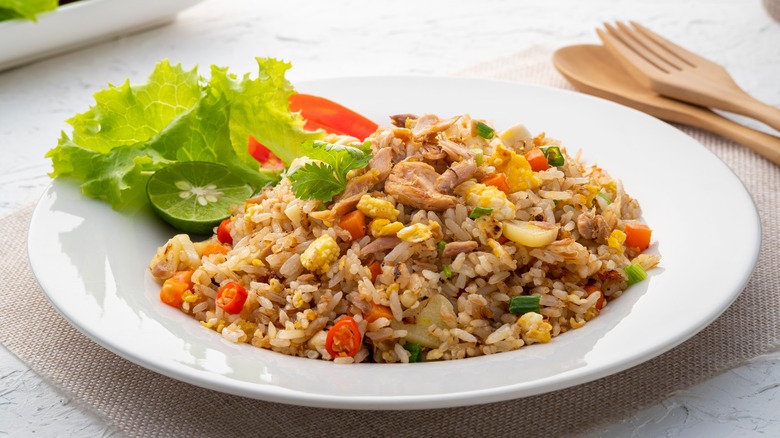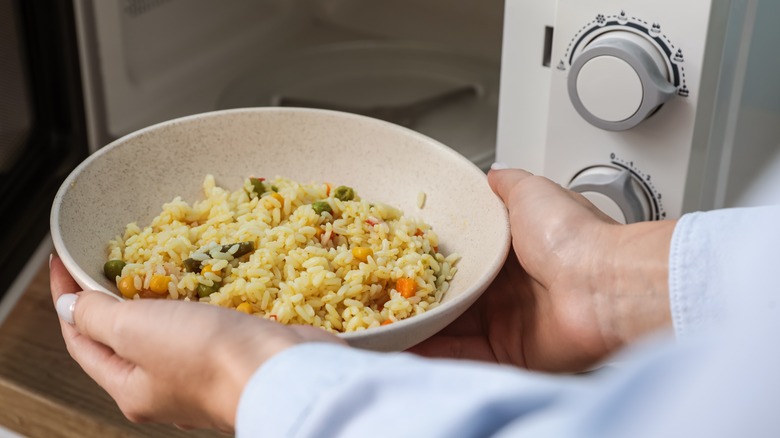Why Room Temperature Grains Are Best For Fried Rice
Perfectly steamed rice requires a meticulous cooking procedure, from selecting the right type of rice to considering the humidity level in the kitchen. That is why, whenever you have some left over, it's only right to find other ways to serve it.
Fried rice is a quick and tasty way to make use of leftover rice, yet people tend to ruin it by making avoidable mistakes. A common misstep is placing chilled leftover grains in the wok straight from the fridge. While storing it in the cold is crucial to avoid spoilage and the proliferation of the Bacillus cereus bacteria, the rice must be thawed properly first so it reaches room-temperature level. As Chef Ang Song Kang explained to the Michelin Guide, rice that has been stored overnight in the fridge would be too cold to absorb the flavors it should get from getting fried. "It'll be a wasted effort," he said.
While the moisture and fluffiness of freshly cooked grains make them unsuitable for fried rice, a low-temperature setting triggers a process called retrogradation, which gives chilled rice an unsatisfactory texture. A study published in the MDPI Journal defines this as the recrystallization of the starch molecules into a different structure, giving chilled rice the firmness that lets it withstand a second cooking. However, it can become so firm that the grains feel crunchy and gritty; you'd still want some softness in your fried rice. They also tend to clump together during cold storage, which hinders better flavor distribution.
Thaw chilled rice in the microwave before frying
Since any temperature between 40 to 150 degrees Fahrenheit is a danger zone where bacteria flourishes, it is important to keep your leftover rice safe enough to eat while thawing it. Rather than risk food poisoning by leaving your chilled rice out on the counter, reheat it properly either on the stovetop, in the oven, or in the microwave. Among the three, the microwave isn't the optimal method, but it is the quickest; it is also what Chef Kang does for efficiency.
Before popping the chilled rice in the microwave, break up any clumps with a fork first. To keep the grains from drying out further, add around 2 tbsps of water per cup of rice before covering the dish and placing it in the microwave at 165 degrees Fahrenheit. You can also try an idea suggested in Business Insider and put an ice cube on top of the bowl of chilled rice, covering everything with a damp towel, and letting it warm up in the microwave on high heat for a minute.
With your leftover rice ready to be fried, make sure that the oil you use has a high smoke point. That way, you can turn the heat on the stove high to give the rice that scrumptiously light and fluffy texture. High heat is also key to making your mix-in vegetables crispy. Stir or toss the rice continuously in the wok to keep it from burning or turning soggy.

